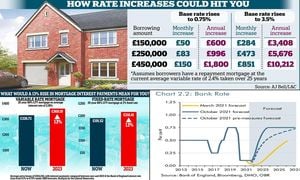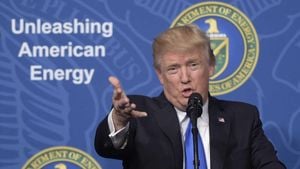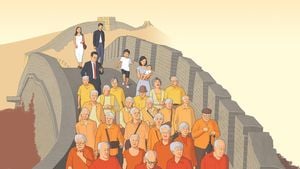Vaccinations for COVID-19 came with the promise of not just preventing illness, but renewing normalcy amid the global pandemic. Yet, as the political winds shift and the U.S. grapples with healthcare inequities, the impacts of these vaccines are not experienced uniformly across demographics. The dilemma of adequate funding and support remains prevalent, especially within marginalized communities.
Healthcare professionals, activists, and local organizations have been vocal about the disparities witnessed since vaccine rollouts began. The Biden administration's initiative to offer free vaccinations was met with applause; nevertheless, what they've termed as ‘equitable access’ has not reached every neighborhood similarly. Underfunded clinics, systemic bureaucracies, and distrust toward the healthcare system add layers of complication to the seamless administration of these vaccines.
“There's no doubt vaccines have been life-saving, but if you look closely, the access isn’t there for everyone. We need to address these gaps,” says Dr. Angela Morales, heading one of the community health centers aimed at vaccinating underserved populations. “Just getting shots in arms isn’t enough; we need sustained engagement and education.”
The United States has been criticized for its handling of vaccination efforts among specific populations. Communities of color and low-income settings have been particularly affected, as evidenced from various studies on vaccination disparities. Many remain skeptical, stemming from historical injustices and lack of representation within the healthcare system.
Recently, the Centers for Disease Control and Prevention (CDC) reported staggering statistics: areas with the highest poverty rates reported the lowest vaccination rates. This sends loud signals about the need for more direct funding and resources designated for outreach programs focused on these specific communities. The realization dawns slowly, but it’s evident—if the fight against COVID-19 is to be won, it must be fought hand-in-hand with equity-driven advocacy.
Compounding the effects of this healthcare crisis are the whispers of political maneuvering. The current administration has maintained strong support for vaccine availability, but noticeable critiques remain. Some political figures and conspiracy theorists question vaccine safety and efficacy, leading to hesitancy across certain populations, particularly among conservative groups. Political narratives often frame the discourse on vaccinations, sometimes overshadowing the voices of healthcare professionals advocating for education over misinformation.
The slow uptake within some demographics indicates what's at stake when health approaches intersect with political ideology. Examining state-level data demonstrates the larger picture—higher percentages of low-income people express skepticism compared to more affluent demographics. Jeremy Curtis, healthcare economist, notes, “It’s vitally important for local leaders to bridge this divide by acknowledging these fears and dispelling myths directly.”
A promising aspect lies within grassroots movements. Organizations have flooded areas with information; pop-up clinics and neighborhood mobile vaccination units have become visible parts of cities. Community leaders have stepped up, offering support via multilingual resources and culturally competent education representing multiple backgrounds.
“Our approach has been to meet people where they are, both physically and emotionally,” says Jose Ramirez, who leads such efforts. “It’s not just about getting them to take the shot; it’s about ensuring they feel safe and heard.” Government data supports these grassroots movements, noting areas with active outreach efforts have experienced higher vaccination rates than those relying solely on mass clinics.
Operationalizing change requires more than effort; it mandates proper funding. Advocates are urging for heightened budget allocations directed at community health programs to help bolster such initiatives. Without adequate financial backing, the long-term strategies for maintaining vaccination momentum could falter, especially post-pandemic. The downstream impacts also extend to issues of health education and preventative care, with potential long-lasting effects for generations to come.
The nature of public health recommendations continues to evolve as the virus mutates and new variants emerge. Such shifts reinforce the urgency of sustained investment and policy shifts toward healthcare access across all communities. For many, the topic of vaccination isn’t just clinical; it’s intertwined with social justice. Those advocating for equitable healthcare urge legislators to listen—what benefits one population should not come at the expense of another.
The future of healthcare, especially amid post-pandemic recovery, relies on collaboration—between federal mandates and state administration, with non-profits often sitting at the intersection. Engaging community dialogue is necessary to critically assess the government’s approach versus on-the-ground realities. The quality of healthcare access is not simply about availability; it’s about trust, education, and respecting community voices.
While the promise of COVID-19 vaccinations is substantial, the responsibility of achieving equitable health outcomes rests squarely on both individuals and institutions. Vaccination against COVID-19 can offer hope, yet the disparities rooted deeply within the healthcare system must be addressed for any significant progress. Long-term, the conversation surrounding healthcare disparities must hence shift from reactive to proactive—ensuring solutions are embedded within community practices and legislative frameworks.
Overall, the lessons learned from the pandemic should compel leaders toward more equitable healthcare systems. It’s not solely about stopping illness; it's about fostering wellness—balancing access, education, and community engagement to advance public health collectively.



